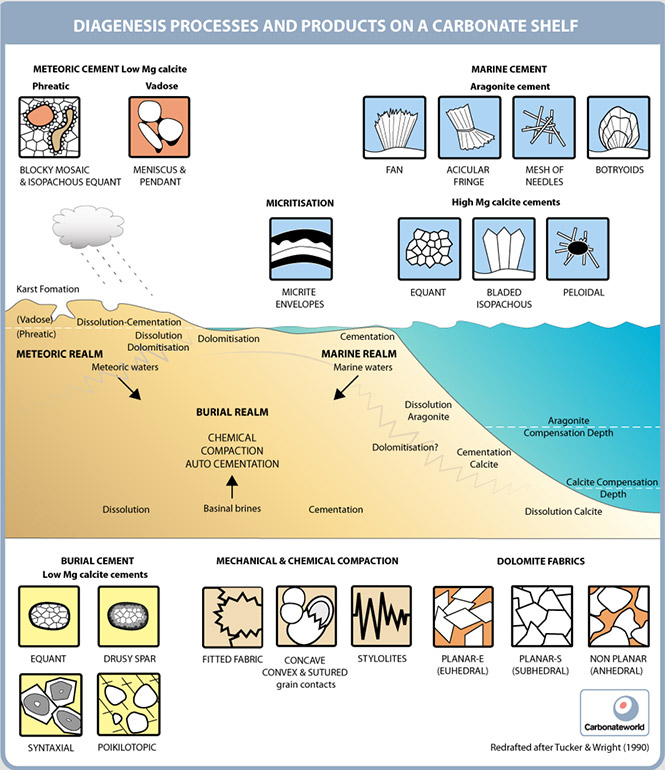CLOSE
CLOSE

Information and diagrams redrafted after Tucker and Wright (1990); Moore (2001); James and Choquette (1990).
All those processes taking place after initial deposition, leading to the stabilisation and lithification of the sediment.
Carbonate sediment is in geochemical equilibrium with the environment in which it forms (e.g., seawater). When it later comes into contact with other fluids – shallow marine burial fluids, meteoric, deep burial fluids, it is subjected to mineralogical and fabric transformation, stabilisation and lithification.
Micrite envelopes, micritized grains (peloids)
Beachrock
Hardgrounds
Dolomite crusts, penecontemporaneous replacive mimetic dolomite
Karst, caves, vug porosity
Meniscus, pendant cement, LMC
Isopachous rims to mosaics of granular, blocky, equant LMC; syntaxial cement.
Caliche, rhizocretion
Transformation into calcite of previously formed dolomite.
Vug porosity
Replacement by LMC
Replacement of carbonate minerals by SiO2 as amorphous silica or chalcedony.
